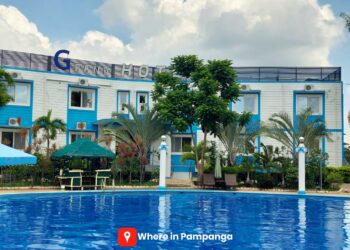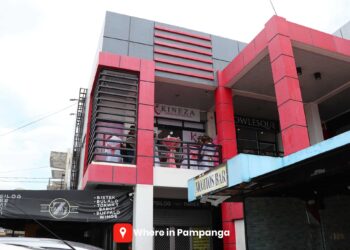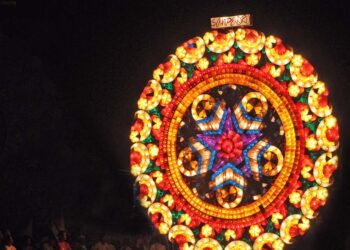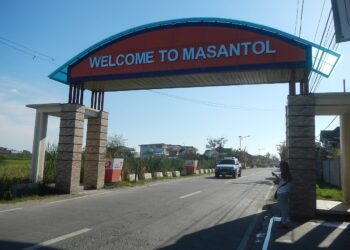The Municipality of Macabebe is a first-class coastal municipality located in the province of Pampanga in Region III or Central Luzon.
The town of Macabebe is situated in the southern area of Pampanga. It is bordered to the north by the metropolises of Minalin, Guagua, and Apalit; to the east by the towns of Calumpit and Hagonoy in Bulacan; to the west by the town of Sasmuan; and the south by the municipality of Masantol and Manila Bay
The meaning of the name “Macabebe” is bordering river banks due to its location along the Rio Grande de la Pampanga known to be the previous name of the Pampanga River.
History
The town of Macabebe was considered one of the most significant and oldest settlements in the province of Pampanga. This old town in Pampanga Province is closely linked to the Rio Grande de la Pampanga, which is now called the “Pampanga River.” The people of Macabebe known as ‘the Macabebes’ were considered the first known Kapampangans. During the Spanish Colonial Period of the Philippines, the Macabebes were regarded as an important figure in the History of the Philippines.
The English translation of Macabebe, meaning: ‘bordering the river banks’ defines the historical heritage of the Macabebe town.
Compared to the other Kapampangan dialects, the tone of the Macabebe dialect is quite strong and louder, it is said that’s how the residents of the town of Macabebe must have had to keep in contact across the river. The main source of income and food for the town is Fishing. That’s why the Pampanga River was considered a high value to the Macabebes, which is why there were a lot of fisheries found along
The Macabebes that have been involved in an active and conflicting role occasionally in the history of the Philippines. The Macabebes battled against the Spanish colonizers in the year 1571, at the same time, they also guarded the remaining Spanish fort in opposition to the insurgents in the year 898.
American General Frederick Funston and his troops arrested Philippine President Emilio Aguinaldo in Palanan, Isabela, with the assistance of some Kapampangans known as the ‘Macabebe Scouts’ named after their town, who had joined forces with the American troops. The Americans pretended to be prisoners of the Macabebes, who were dressed in Philippine Army uniforms. Once Funston and his “captors” arrived in the camp of Aguinaldo, they immediately mobbed the guards and quickly stunned them, and the exhausted Aguinaldo in 1901.
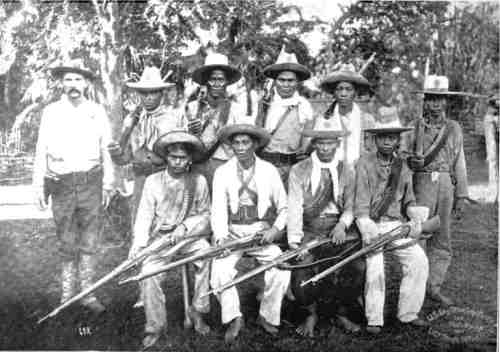
During World War II, many Japanese combatants and bomber planes crashed and air raids attacked the municipalities in Macabebe in December 1941, under the Invasion of the Imperial Japanese Government, they were occupied by the Imperial Japanese troops as they entered the municipalities on 1942 during the Japanese Occupation of the Philippines.
Barangay
The Municipality of Macabebe is divided into 26 barangays.
| Batasan | Caduang Tete | Candelaria | Castuli | Consuelo |
| Dalayap | Mataguiti | San Esteban | San Francisco | San Gabriel (Poblacion) |
| San Isidro (Poblacion) | San Jose | San Juan | San Rafael | San Roque (Poblacion) |
| San Vicente | Santo Rosario (Poblacion) | Santa Lutgarda | Santa Maria | Santa Rita (Poblacion) |
| Santo Niño | Santo Rosario (Poblacion) | Sapang Pari | Saplad David | Tacasan |
| Telacsan |
Festivals
Town Fiesta
The Municipality of Macabebe celebrates an annual festival honoring the patron saint of the town, San Nicholas de Tolentino every 10th of September.
Santero Festival
Macabebe, one of the ancient towns in Pampanga, is the homeland of the Santeros. They are Artisan that utilizes wood, ivory, cement, or fiber glass to make a religious art piece known as ‘Santo,” typically an image of Jesus Christ, The Blessed Virgin Mary, or patron saints. The festival is held every January 17.
Barangay Festivals
Barangay Sta. Maria
Festival held every last Sunday of April honoring the patroness of St. Mary, Mother of Jesus.
Barangay San Jose
Festival held every 3rd Sunday of March honoring the sainthood of St. Joseph.
Barangay Sto. Rosario
Festival held every May 1st honoring the patroness of The Our Lady of the Most Holy Rosary.
Barangay San Rafael
Festival held every 24th of October honoring St. Raphael the Archangel.
Barangay San Juan
Festival held every 24 of June honoring the sainthood of St. Joseph the Baptist, where people would splash water on one another.
Barangay San Gabriel and Barangay Caduang Tete
Festival held every 2nd Sunday of May honoring St. Gabriel the Archangel.
Barangay San Isidro
Festival held every 15th of May honoring the sainthood of St. Isidore the Farmer.
Barangay Sto. Niño
Festival held twice a year; 1 on every 3rd Sunday of January and 2 is every 3rd Sunday of April honoring the sainthood of Sto. Niño.
Barangay Batasan
Festival held every 2nd of February honoring Nuestra Señora de Candelaria and the “Presentation of the Lord Parish.”
Barangay Sta. Rita
Festival held every 22nd of May honoring Sta, Rita.
Barangay San Roque
Festivals are held every 1st Sunday of May honoring Saint Roch. However, the West celebrates its festivity every August 16.
Barangay Lutgarda
The festival is held every 1st Sunday of May and the 16th day of June honoring the birth of St. Lugardis.
Barangay San Vicente
Festival held every 1st Sunday of April honoring the sainthood of St. Vincent.
Barangay San Francisco
Festival held every 2nd Sunday of April honoring St. Francis of Assisi.
Barangay Castuli
The festival is held every last Saturday of February to honor the patroness of Our Lady of Lourdes.
Barangay Mataguiti
Festival held every 1st Sunday of May and they have their fluvial procession honoring the Lord Jesus Christ cross.
Barangay Candelaria
The festival is held every 2nd day of February and has its own Fluvial procession honoring Nuestra Señora de Candelaria
Landmarks and Attraction
San Nicolas de Tolentino Church
Commonly called “the Macabebe Church” was erected on March 3, 1575. It’s the 3rd oldest constructed Church in Pampanga.
Macabebe á Rizal Monument
The “Macabebe á Rizal” Monument displayed the town’s gratitude for the making of the Filipino nation during the American period. It was the first act of the Macabebes to honor the icon of the Revolution in 1919.
King of Macabebe (Nameless Hero) Monument
The young leader of Macabebe commanded more than 2,000 combatants from Pampanga and Bulacan to oust the Spaniards from Luzon on 31 May 1571. For more decades, he has been confused with Rajah Soliman, owing to Pedro Paterno’s assigning him the name “Tarik Soliman”. The Spanish people usually called him “Bambalito”, a derogatory term, that does not identify him
References:
* https://www.philatlas.com/luzon/r03/pampanga/macabebe.html
* https://pampanga.gov.ph/index.php/the-government/155-capitol/districts/district-iv/macabebe/335-municipality-of-macabebe.html
* https://infogalactic.com/info/Macabebe,_Pampanga
* https://en.wikipedia.org/wiki/Macabebe
* https://www.liquisearch.com/macabebe_pampanga/history
* https://kaplistorian.blogspot.com/2017/06/49-18-pampanga-landmarks-and-monuments.html
*https://www.zamboanga.com/z/index.php?title=Macabebe%2C_Pampanga%2C_Philippines&redirect=no#History_of_Macabebe.2C_Pampanga.2C_Philippines
* https://iorbitnews.com/santero-festival-redefines-macabebe/
* https://www.pampanga.gov.ph/index.php/shopping/189-capitol/tourism/municipality/317-macabebe.html
*For corrections or commentaries, please email us at whereinpampanga@gmail.com

